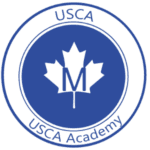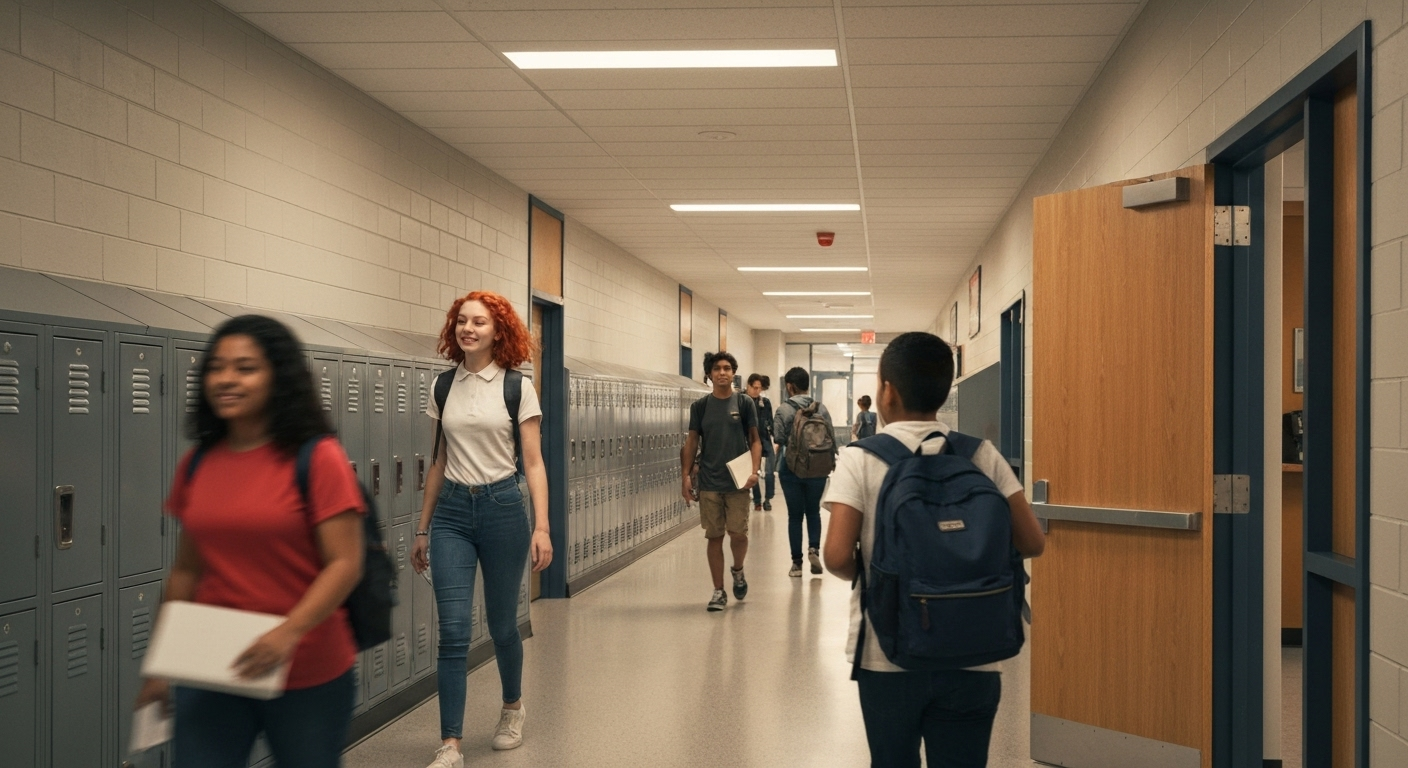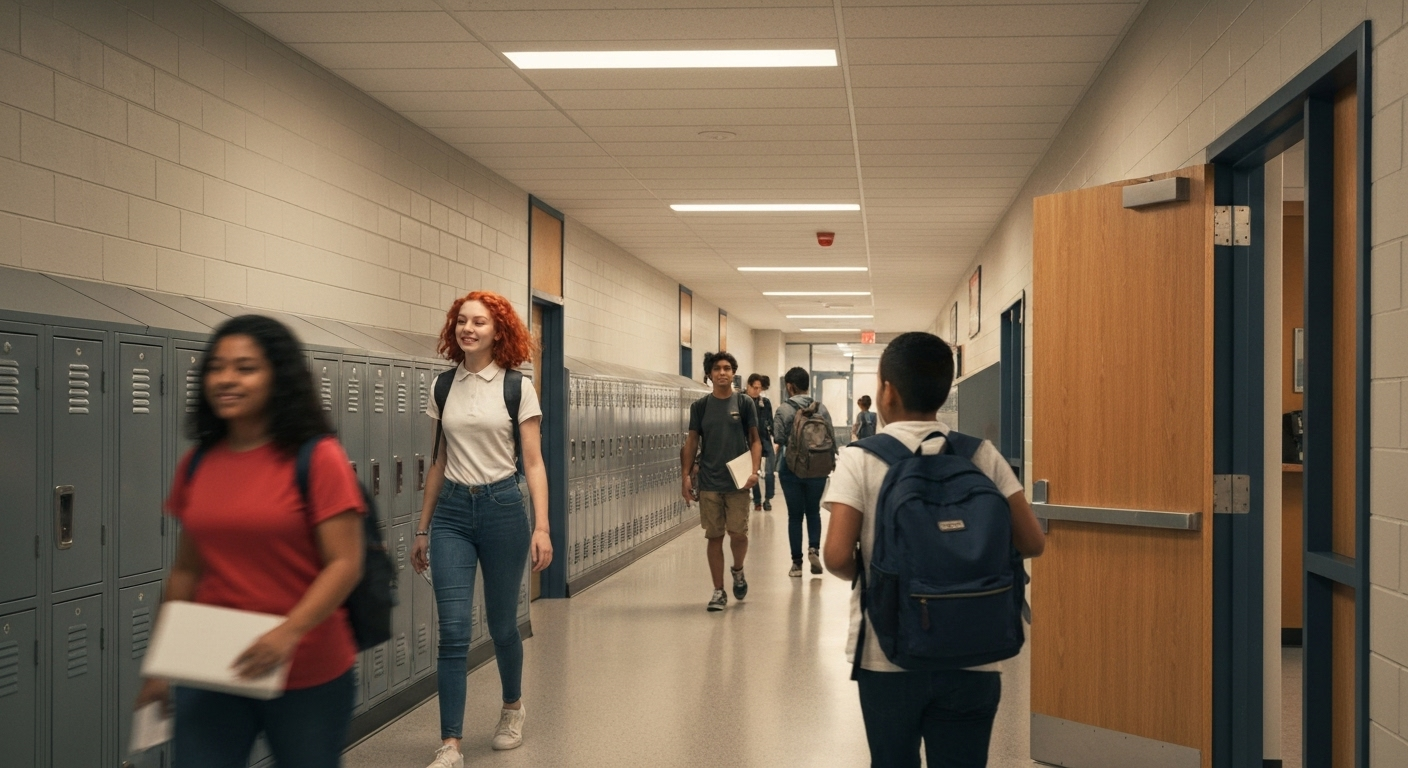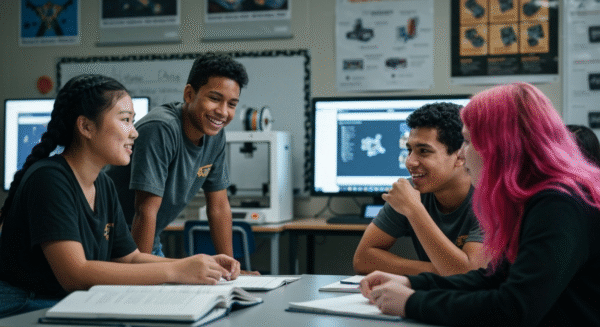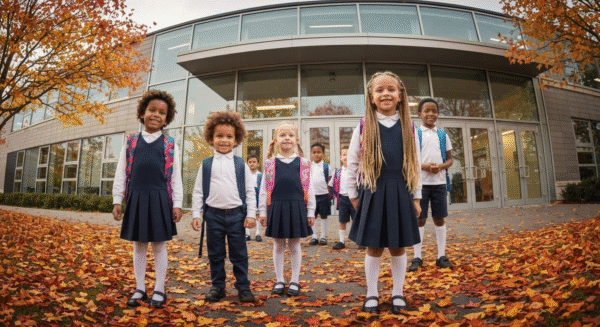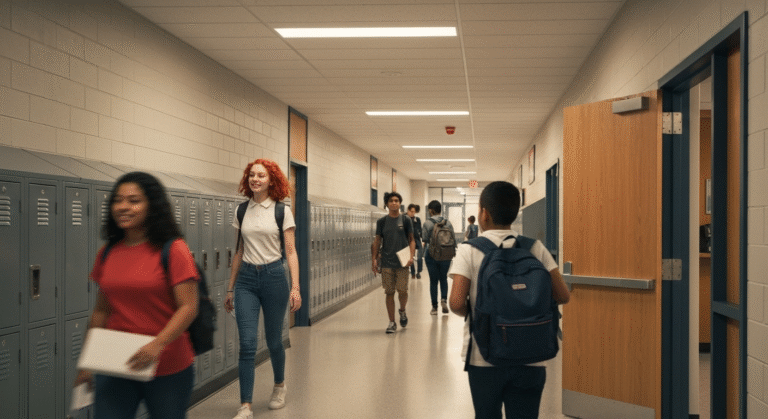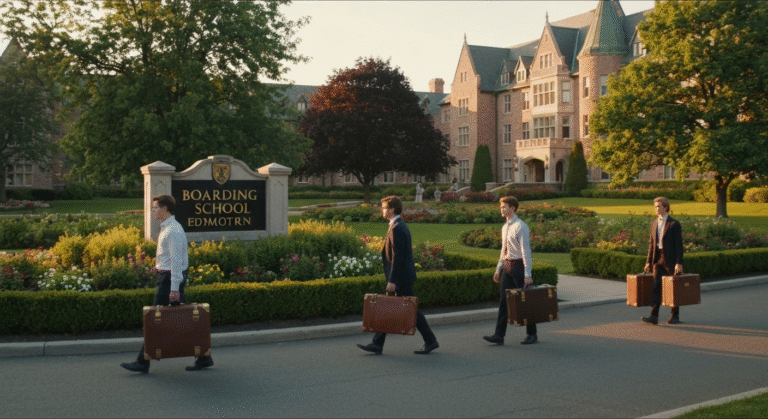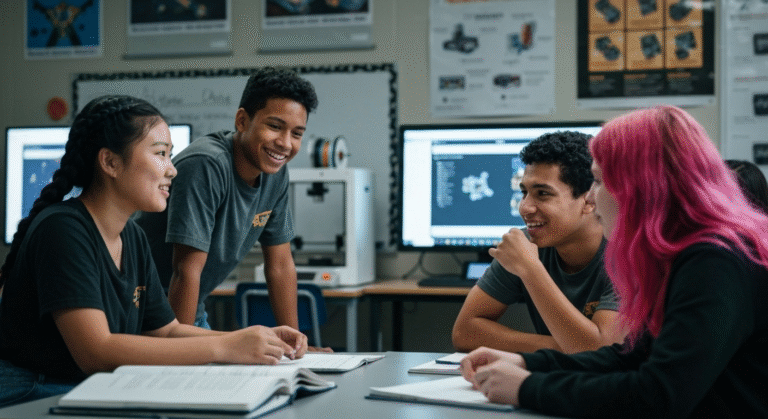Key Highlights
- A secondary high schools is the stage where students learn between primary school and higher education. Most students in this level are from 11 to 18 years old.
- The curriculum in secondary education changes in every country, but in most places, students start to learn more about single subjects. This helps them get ready for different jobs in the future.
- Canada gives students good secondary education. There are public schools run by local school boards and also private or independent schools.
- If you use school rankings, you can get some ideas about how good a school is. But you should look at other things too before you choose the right high school.
- International students can join many Canadian high schools. They bring many new ideas to the classroom and also get the chance to move into higher education after they finish.
Introduction
Secondary high schools is an important stage for students. It helps them move from basic learning to thinking about what they want to do next. This time is key for students to grow in school, learn more about themselves, and get ready for jobs. A strong secondary education system gives all students the skills and knowledge they need for university, college, or work. It’s also helpful to know about the types of high schools, school subjects, and worldwide education standards. That way, you can make good choices for your child’s future. This guide will show you what secondary education is and why it matters.
Secondary High Schools: Structure, Purpose & Global Impact
Secondary high schools are the schools that students go to after they finish primary school. The main goal of these schools is to teach students more about certain subjects. This helps teenagers get ready for either going on to higher education, called tertiary education, or going into a job. This level of learning helps shape the workers and leaders of the future, and it matters a lot to people all over the world.
In many countries, education policy guides what happens in these schools. The rules for these schools are usually watched over by a ministry of education or by school boards in the local area. We will look at how these schools are set up in different places and see how they are not all the same in every country.
How Secondary High Schools Differ from Other School Types
- Transitioning from primary to secondary high school means students move from one main classroom to different subject-specific rooms, each led by specialized teachers.
- Secondary high schools cover the final years of compulsory education, focusing on deeper learning and preparing students for higher education or vocational paths.
- These schools are typically larger than elementary schools, offering a wider variety of courses, clubs, and sports to suit diverse interests.
- The main goal of secondary high schools is to equip students for the next stage in life, helping them make important decisions about their future education or careers.
International Perspectives on Secondary Education
- Secondary education systems differ globally, with terms, ages, and structures varying by country. For instance, U.S. students attend high school from grades 9-12, while in the UK, secondary school starts at age 11 and ends with “A-Levels” for university entry.
- Countries like Australia and New Zealand use “Year” or “Grade” to describe levels, reflecting unique approaches and cultural values towards education.
- International programs such as the International Baccalaureate offer standardized curricula, making it easier for students to transfer between countries and for academic achievements to be compared worldwide.
Understanding Secondary School Levels and Grades in Canada
In Canada’s education system, high school starts in grade 9 and goes until grade 12. The school year begins in September and ends in June. Some students go to summer school to get more credits or make their grades better.
Every province has its own ministry of education. The ministry sets the rules to make sure schools give students a good learning experience. In the next part, you will see more details about the grades and ages in Canadian high schools.
Overview of High School Grades and Age Ranges
High school students in Canada are often young teens or adults who are finishing the last years of their compulsory education. The age for each grade matches where students should be, so they stay with people of their age. There can be small changes in each province, but overall, high school is set up in a similar way across the country.
Based on education statistics, students have to go to high school until they are either 16 or 18 years old. The exact age depends on the rules of the province where they live. This rule makes sure every high school student can finish their secondary education before going into higher education or getting a job.
The most common grade levels and the ages of students taking them in high school are:
- Grade 9: 14–15 years old
- Grade 10: 15–16 years old
- Grade 11: 16–17 years old
- Grade 12: 17–18 years old
Major Types of Secondary Schools in Canada
When you look at secondary education in Canada, you will see that there are many types of schools to choose from. Some schools are public, some are private (these are also called independent schools), and some are special places like vocational schools. Each one gives you a different way to learn and offers a different kind of school life.
Most people pick public schools, but some might go for private schools. Private schools often have fewer students in every class or may have special programs. It is important to know how these schools are not the same. That will help you figure out which is the best choice for your child.
Public High Schools: Structure and Access
Public high schools in Canada are paid for by the government. They are free to attend for Canadian citizens and permanent residents. Local school boards take care of these schools. The school boards follow rules from the provincial ministry of education. This helps make sure all students get the same and good education.
The curriculum is set by the education system. So every student learns from the same outcomes. Most public schools teach boys and girls together. They also have day programs. Students can choose from many different courses and join other activities after school.
If you want to sign up, you first need to talk to the school board in your area. Many public high schools now welcome international students. This means families coming to Canada can use this option for their kids.
Independent and Private Ontario Secondary Schools
For families seeking alternatives to public schools, independent and private Ontario secondary schools provide distinct options. These schools require tuition and follow the provincial curriculum but stand out for their specialized teaching styles and unique programs. Smaller class sizes often allow for more personalized support. Many offer strong academics, arts, or sports programs, and a different school culture. Common options include:
- Preparatory programs for university readiness
- Boarding schools with on-campus living
- Separate schools with religious or single-gender focus
Some schools cater to specific learning needs or offer programs like the International Baccalaureate. Contact schools directly for application details.
Curriculum Structure in Canadian Secondary High Schools
The high school curriculum in Canada helps guide students through their last years of secondary education. It mixes required subjects with a choice of elective classes. This lets students explore what they like. Education policy shapes the structure so every graduate is ready for university, college, or work.
During the school year, students earn credits. These credits are needed for a high school diploma. In the next sections, you will see more about Ontario’s rules and the main pathways in the high school curriculum.
Ontario Curriculum Standards and Pathways
The Ontario Ministry of Education sets curriculum standards for all secondary schools, ensuring a consistent and high-quality education. A key aspect is the availability of different learning pathways that suit students’ goals and learning styles. After Grade 10, students select courses aligned with their intended post-secondary destination: university, college, or the workplace. This structure allows students to focus on relevant skills and knowledge in their senior years. The Council of Ministers of Education, Canada, supports robust and comparable standards nationwide.
|
Pathway |
Focus |
Prepares For |
|---|---|---|
|
University |
Theoretical knowledge and abstract thinking |
Bachelor’s degree programs at a university |
|
College |
Practical applications and hands-on skills |
Diploma or certificate programs at a college |
|
Workplace |
Direct entry into the labor market |
Apprenticeships or employment after graduation |
Innovations in Curriculum: Spotlight on USCA Academy in Mississauga
- Curriculum innovations at USCA Academy in Mississauga focus on helping students think independently, develop creativity, and gain global understanding, preparing them for future changes.
- The academy offers strong academic programs with personal support, especially benefiting international students by providing a safe, friendly environment and guidance toward top universities.
- By using modern teaching methods and supporting individual student needs, USCA Academy creates an engaging high school experience, helping all learners local and international build a strong foundation for future success.
School Rankings and Factors Affecting School Quality
School rankings can help parents look at how good some secondary schools are. These lists use education statistics to show a simple look at the schools’ grades. But, you should know that rankings are not the only way to pick the right school.
Getting a quality education comes from more than scores. You want good teachers, a friendly school place, and a lot of classes or activities, too. A school information finder can be useful to get facts. Even so, taking the time to visit the school and talk to staff or teachers lets you see more for yourself.
What School Rankings Measure in Ontario Secondary Schools
When you look at school rankings for Ontario secondary schools, they mainly focus on academic indicators using statistics from the provincial ministry of education and results from standardized tests. These rankings aim to show how each school performs for easy comparison. However, rankings only present a numerical view and miss important aspects like school atmosphere, student relationships, and the presence of extracurricular activities, all of which contribute to a positive school experience. While useful, rankings do not capture every element that matters.
Common metrics used in school rankings include:
- Average scores on province-wide standardized tests (e.g., EQAO).
- Graduation rates.
- The difference between male and female student achievement.
- The percentage of tests written that are below the provincial standard.
Top-Ranked High Schools in Ontario: Overview
While the top-ranked high schools in Ontario can vary each year, certain institutions consistently excel in academic outcomes, making them stand out in provincial reports. Publications such as U.S. News & World Report highlight Canada’s strong education system globally, but for local insights, parents rely on school information finders and organizations that analyze Ontario-specific data. These reports often feature schools with high standardized test scores and graduation rates. The leading schools include a mix of public, Catholic, and private institutions, reflecting the province’s diverse educational opportunities. Instead of relying solely on rankings, it’s useful to consider the features contributing to their success.
|
Feature of Top-Ranked Schools |
Why It Is Important for School Quality |
|---|---|
|
High Standardized Test Scores |
Indicates strong academic instruction and student learning. |
|
Low Gender Gap in Achievement |
Suggests an equitable learning environment for all students. |
|
High Graduation Rate |
Shows the school is successful in guiding students to completion. |
Career Pathways After Secondary High School
Finishing secondary education at high school is a significant step that opens various career pathways. Here are some options students can consider:
- Higher Education: Many pursue college for practical skills or universities for bachelor’s degrees, where high school performance plays a crucial role.
- Immediate Employment: Some graduates opt to enter the workforce directly, gaining experience and income.
- Apprenticeships: Skilled trades are an attractive option, allowing students to learn on the job while earning.
- Guidance and Support: School counselors assist in navigating applications and important deadlines, ensuring a smooth transition from high school to career or further education.
Conclusion
In the end, secondary high schools are important in the world of learning. They help students learn the basics and grow as people. These schools also change what they teach and how they teach so they can meet the needs of more students. At places like USCA Academy in Mississauga, new ways of learning and fresh ideas in the classroom help students get ready for a fast-changing world. Secondary high schools focus on both school success and helping students become good people. They give students the tools they need for work and to be part of the community. If you want to know more or see how these schools can help you, contact us today!
Frequently Asked Questions
1. Are secondary high schools the same as high schools in every country?
No, they are not the same. The schools do have a similar job in teaching students, but there are differences in the structure and curriculum across the world. The names for these schools also change by country. For example, in the United Kingdom, the education system is unlike the one in the United States. They have different age groups and use different words. This shows how secondary education can be different in each country.
2. Can international students attend Canadian secondary high schools?
Yes, international students can join canada’s education system. Many school boards and private schools here have special programs for students who come from other countries. Canada is a good place to get a high school education. The schools offer quality education. The country is safe, and people here support international students. This makes Canada a great choice for a high school experience.
3. What role do extracurricular activities play in secondary education?
Extracurricular activities are important for students in high school. They help students grow in many ways outside the classroom. These activities work with the school subjects to build teamwork, leadership, and better use of time. Sports, clubs, and the arts make the high school experience richer. Taking part in these activities helps you meet new people, learn new things, and improve how you work with others. All this adds to good student development.
4. Is online secondary education a viable alternative to traditional schooling?
Online secondary education is now a good choice for many students. The school year can be more flexible, and it works for different ways people learn. It is important to check that the online program is approved by the Ministry of Education. This will make sure the education policy is followed, and you will get a real diploma.
